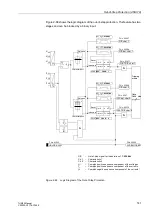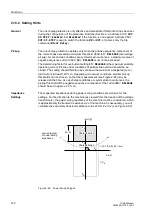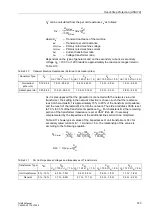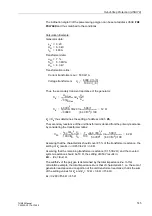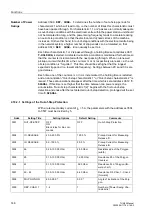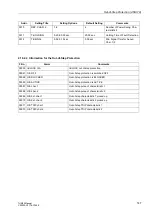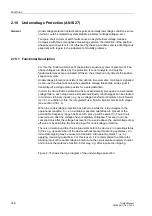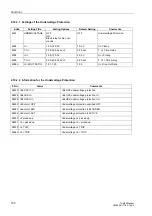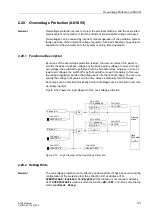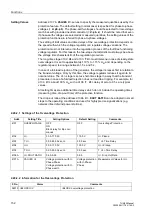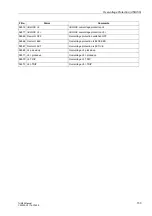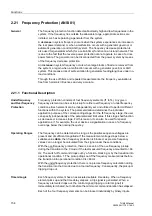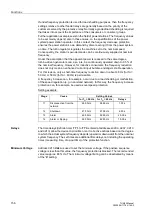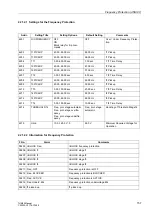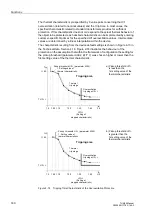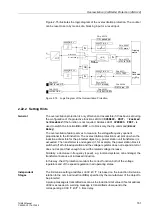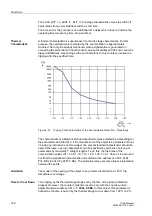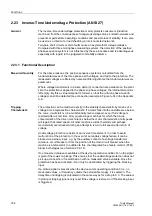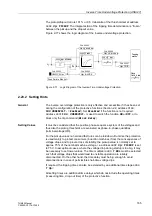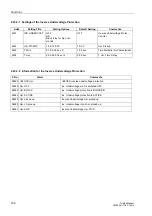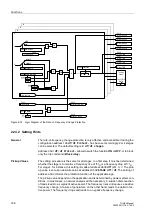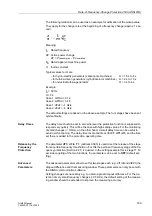
Functions
154
7UM62 Manual
C53000-G1176-C149-3
2.21
Frequency Protection (ANSI 81)
General
The frequency protection function detects abnormally high and low frequencies in the
system. If the frequency lies outside the allowable range, appropriate actions are
initiated, such as separating a generator from the system.
A decrease in system frequency occurs when the system experiences an increase in
the real power demand, or when a malfunction occurs with a generator governor or
automatic generation control (AGC) system. The frequency decrease protection is
also used for generators which (for a certain time) function on an island network. This
is due to the fact that the reverse power protection cannot operate in case of a drive
power failure. The generator can be disconnected from the power system by means
of the frequency decrease protection.
An increase in system frequency occurs when large blocks of load are removed from
the system, or again when a malfunction occurs with a generator governor or AGC
system. This means a risk of self-excitation for generators feeding long lines under no-
load conditions.
Through the use of filters and repeated measurements, the frequency evaluation is
free from harmonic influences and very accurate.
2.21.1 Functional Description
Underfrequency
and Overfrequency
Protection
Frequency protection consists of four frequency elements (f1 to f4). Any given
frequency element can be set to pickup for either overfrequency or underfrequency
conditions. Each element can be independently set, and utilized to perform different
functions within the system. The parameterization determines the individual
application purpose of the corresponding stage. For the f4 frequency stage, the user
can specify independently of the parameterized limit value if this stage shall function
as decrease or increase stage. For this reason, it can also be used for special
applications, if, for example, the user desires a signalization in case of a frequency
overrange below the nominal frequency.
Operating Ranges
The frequency can be determined as long as the positive sequence voltages are
present and of sufficient magnitude. If the measurement voltage drops below a
settable value
, then frequency protection is blocked, as precise frequency
values can no longer be calculated from the signal under these conditions.
With the overfrequency protection, there is a seal-in of the overfrequency pickup
during the transition to the 0 mode, if the last measured frequency amounted to >66
Hz. The switch-off command drops out by a function blocking or by the transition into
operational condition 1. The pickup drops out if the frequency measured last before
the transition into operational condition 0 is <66 Hz.
With the underfrequency protection, there is no precise frequency calculation during
the transition into the 0 mode due to a too low frequency. Consequently, the pickup or
tripping drop out.
Timers/Logic
Each frequency element has an associated settable time delay. When a frequency
element picks up and the time delay elapses, a trip signal is generated. When a
frequency elements drops out, the control signal (tripping or alarm signal) is
immediately terminated, but not before the minimum command duration has elapsed.
Each of the four frequency elements can be blocked individually by binary inputs.


